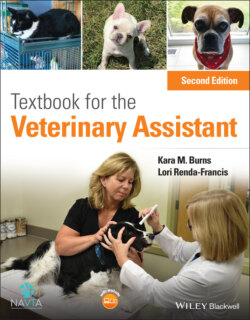Читать книгу Textbook for the Veterinary Assistant - Lori Renda-Francis - Страница 47
Social behavior Canine
ОглавлениеThe social groups of today’s domesticated dog are small and open to outsiders. They typically are not related individuals. There are also misperceptions regarding dominance in dogs and that dominance is a personality trait in dogs. In fact, we may see one dog take the dominant role in one relationship and a subordinate role in a different relationship. Additionally, the roles may change between individuals, depending on the context in which the interaction takes place. Oftentimes, dogs are incorrectly labeled by their owner as “dominant” when, in fact, they are fearful. The misconception that dog behavior problems are caused by dominance has led to the application of cruel and unwarranted forms of dog training. Dog owners do not need to and should not physically dominate their dogs and need to be educated regarding this mistaken belief. These types of behavior are likely to worsen the fearful dog's behavior problems.
Dogs use an assortment of visual and olfactory cues when initiating, forming, and maintaining social relationships. When unfamiliar dogs meet, they normally begin by sniffing each other. Commonly, sniffing begins at the head and moves toward the tail. Typically, the dog that approaches and begins sniffing first may resist being sniffed itself. Although the dog that is being sniffed is most likely to try to terminate the interaction, it is unlikely to attempt to sniff the other dog. A dog attempting to take the dominant role will usually approach the other dog in a “T position” in relation to the other dog's shoulder and begin sniffing. If accepting a subordinate role, the other dog turns its head away from the approaching dog. Dogs that do not want the subordinate role may resist being sniffed and may attempt to sniff the other dog. In addition, dogs may signal submission by rolling over on their back and exposing the inguinal region. This area is then sniffed by the dominant dog. Often, the dog will raise a paw loosely, wag its tail loosely, and exhibit a play face. Often this followed by the play bow indicating it is ready for play.
